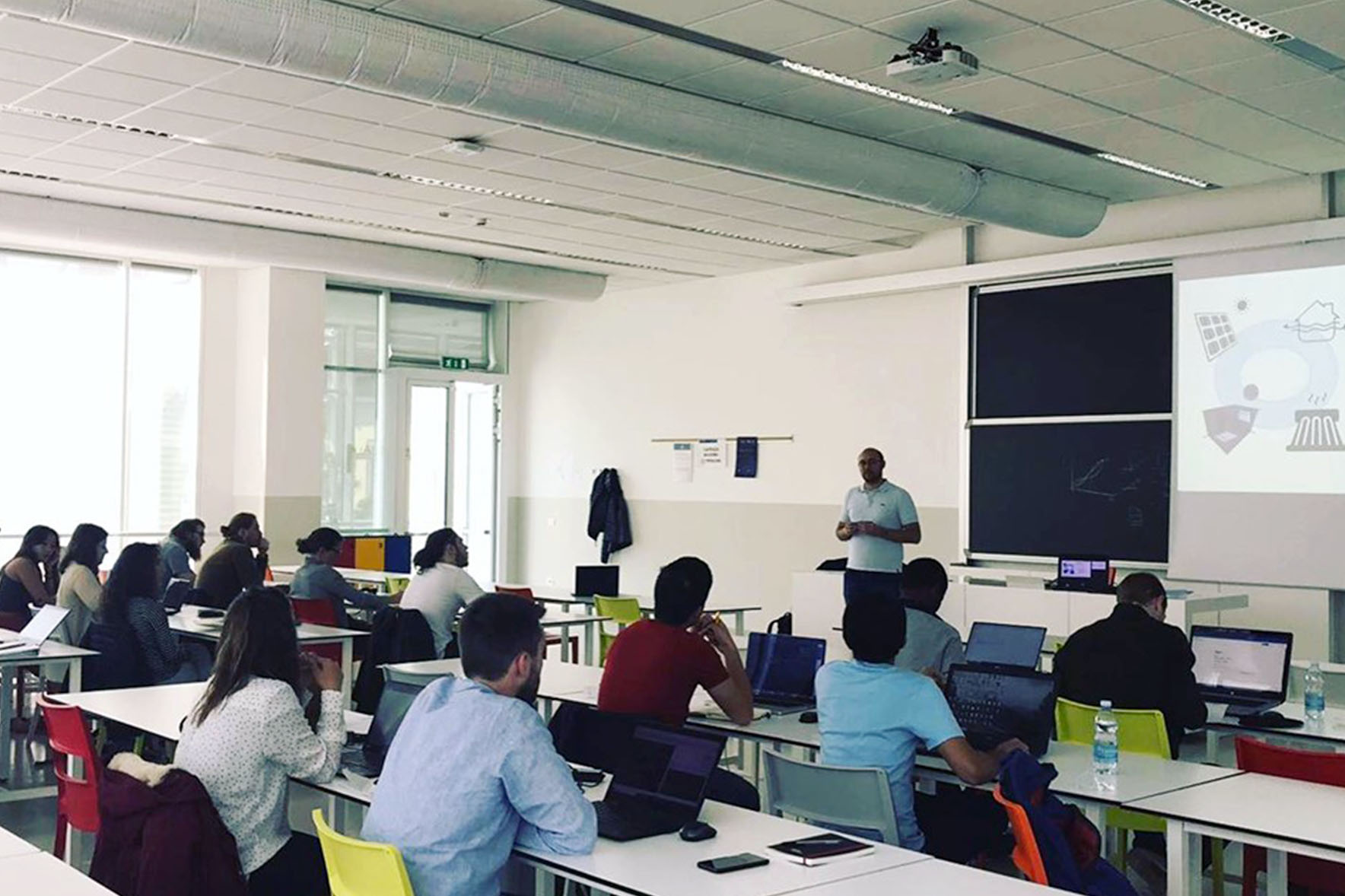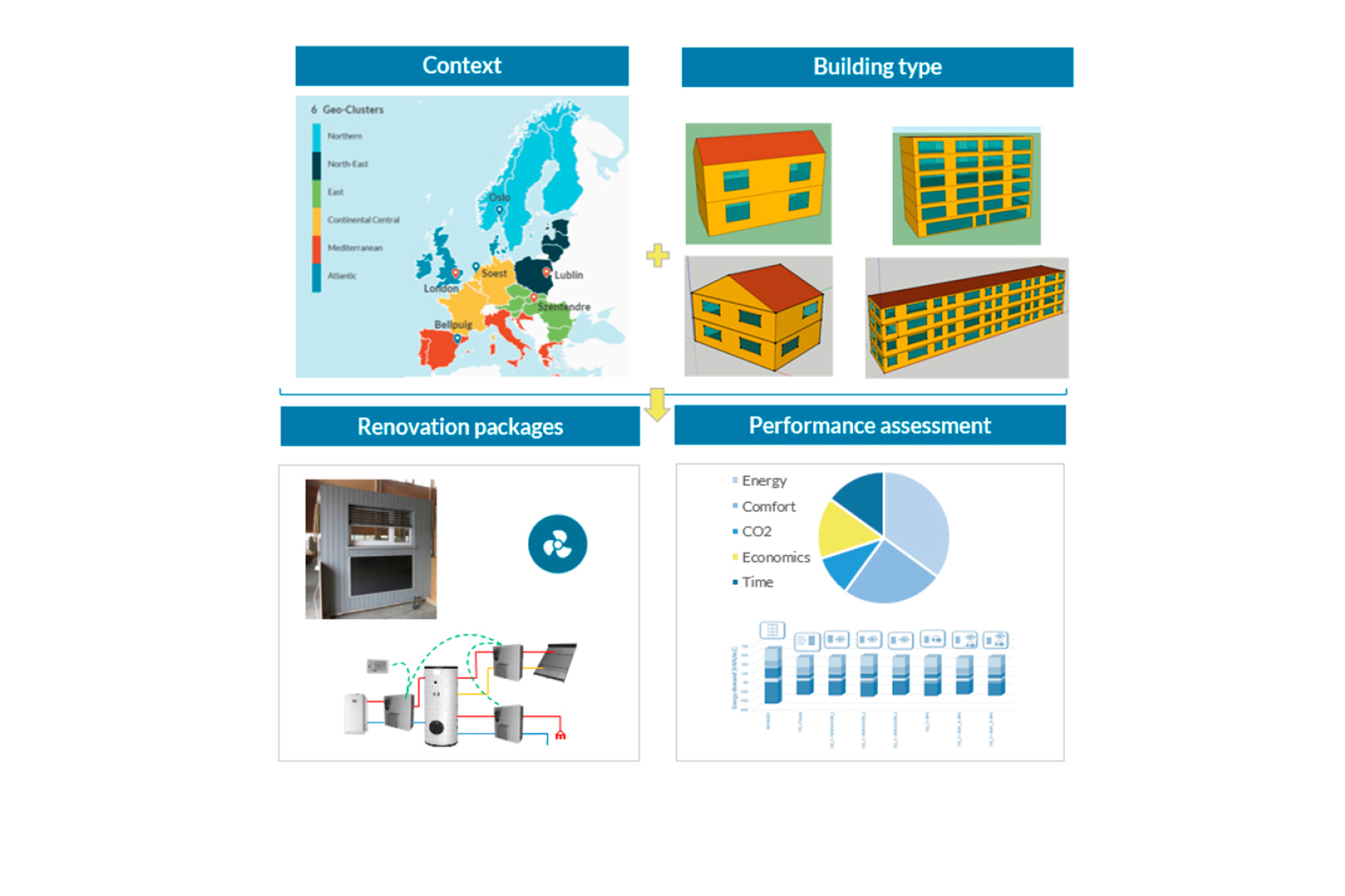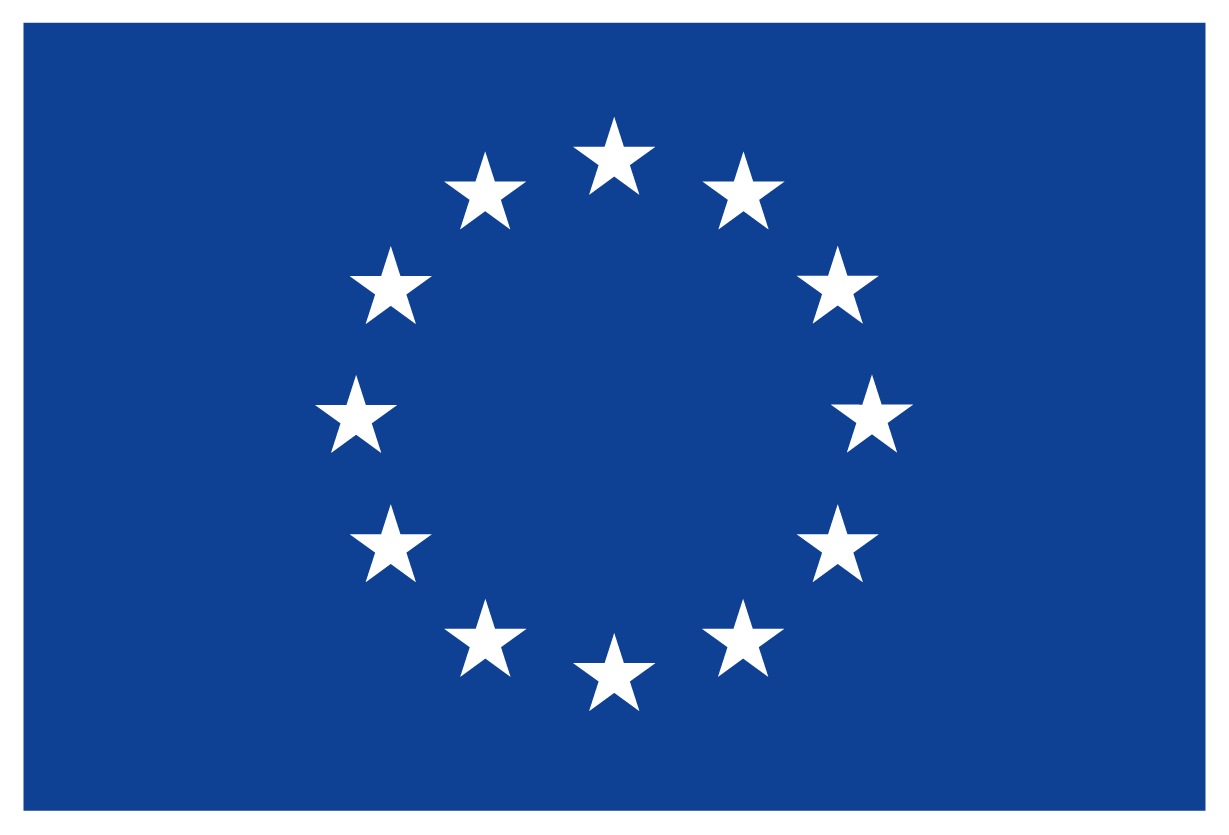4RinEU is training future professionals
- A moment of the lecture in Lecco
- 4RinEU training on the newspaper
The research team of 4RinEU within Eurac Research has delivered a 2-days training at a hosting academic institution in Italy.
As part of the dissemination tasks of 4RinEU, training and skills development is a substantial component. Particularly, such tasks are devoted to developing the necessary skills for a new generation of practitioners in the energy retrofit of buildings. Accordingly, last Spring, researchers from Eurac held a two-day training session on the software Early-RENo last 16-17 May 2019.
Early-RENo is an early design tool under development within the context of the project 4RinEU. It consists of a set of methodologies developed by Eurac Research and Aiguasol which aims to support the designers in the first phases of the renovation projects. It covers four important topics: photovoltaic systems, solar thermal systems, natural ventilation and daylighting. The modularity of Early-RENo allows the user to design an efficient use of on-site resources. These are case-specific and will increasingly become an important aspect of the design process. For example, it is possible to refine a single optimization without re-running all the other modules. In the long run, the intent will be to extend the ‘users’ umbrella to designers with limited computer expertise.
In this occasion, the main training target group consisted of students from the University Polytechnic of Milan (Italy) and students from the University of Colorado at Boulder (US). These students came from the faculties of architecture and therefore they constituted most suitable -future and worldwide- demographic of project managers, architects and other professionals involved in the design and construction sector, that way successfully targeting and training a new generation of practitioners.
Within a two-weeks global exchange in Italy between the University of Colorado and Milan Polytechnic, Eurac Research as the main partner of 4RinEU has designed and delivered a two-days’ workshop on Early-RENo software.
A 3D geometry was pre-generated and was sent to the training students beforehand. Then, a weather file and the geometry became the input for the Radiance simulation which provided an irradiation map. Students were then able to optimize positions and capacity of PV and check to which degree the optimal system was able to meet the electricity demand. Also, students were able to assess several techno-economic inputs, such as electricity price, technical characteristics of the system. Students were guided by the lecturers in an exploration of these variables impact on the results.
In terms of training contents, the first day consisted of front lectures aimed at providing students with the appropriate background. Among these, there were sessions on (a) an introduction to Early-RENo, (b) a presentation of the three parts of Early-RENo software (i.e. PV, lighting and ventilation), (c) overview of the prerequisites to use the software, (d) a live demonstration, and finally (e) a guided software installation with troubleshooting. The second day, lecturers from Eurac Research delivered a hands-on session, where students used a 3D model to test their PV projects with the software Early-RENo.
Early-RENo and its user interface are still under test phase. Therefore, this workshop has also provided feedback to the developers regarding its use cases and possible development.



 Previous Post
Previous Post Next Post
Next Post